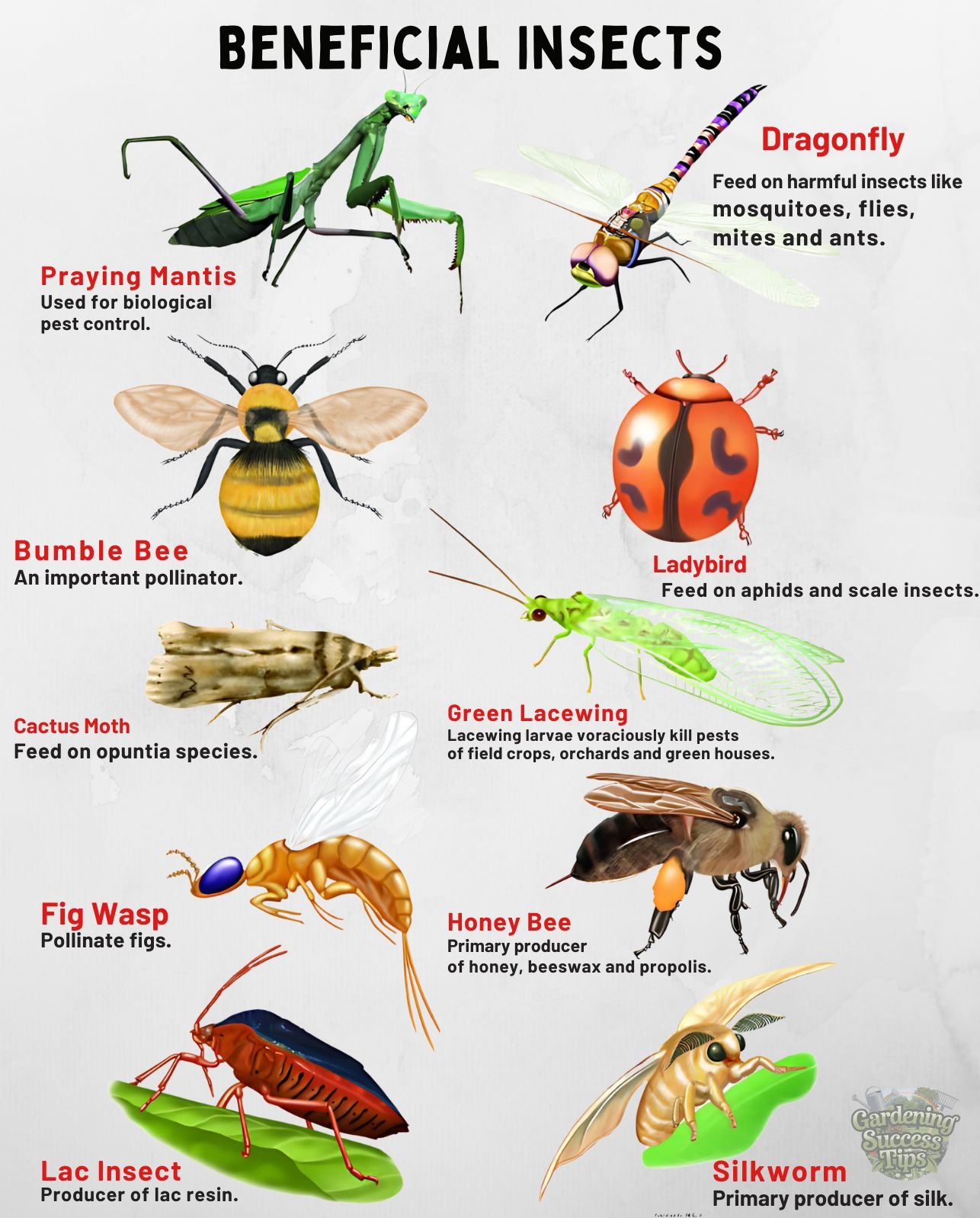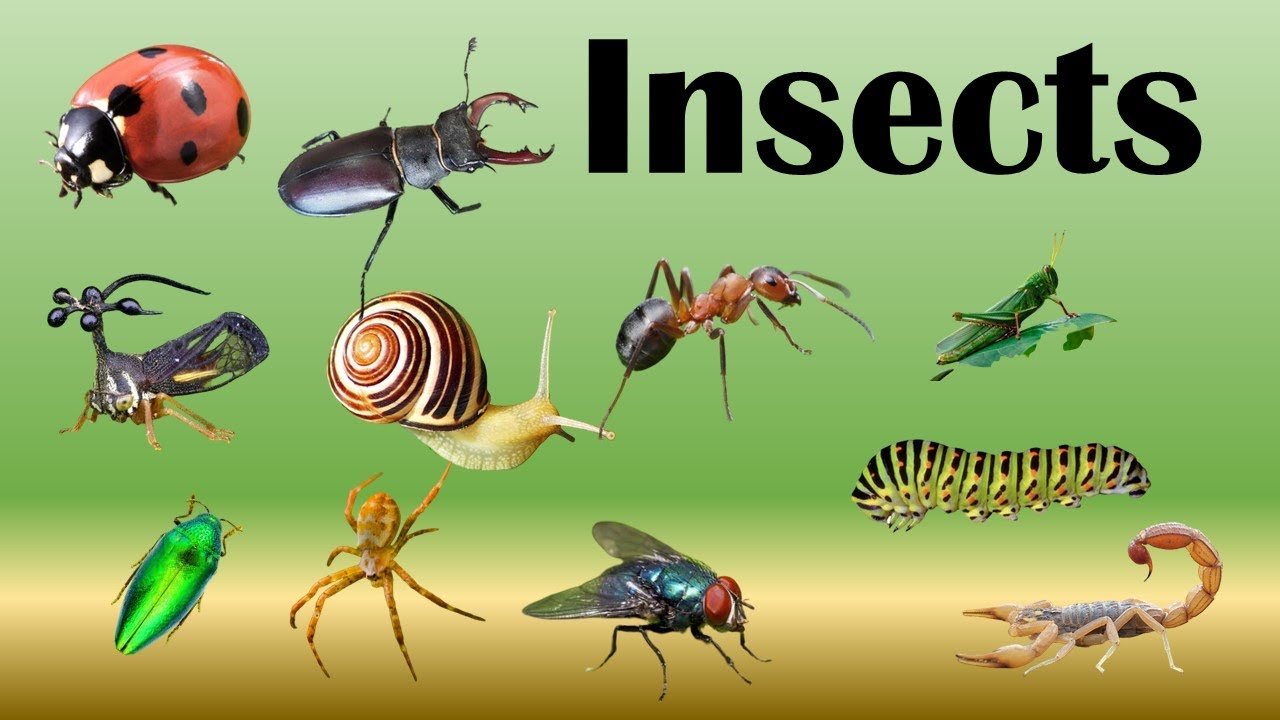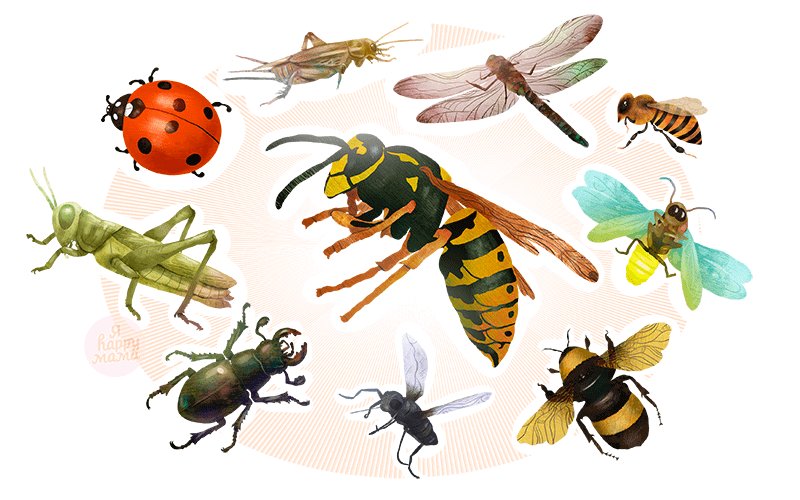When it comes to bugs in your garden, most people’s immediate response is to grab the nearest pesticide. While it’s tempting to try and eliminate every bug in sight, it’s important to remember that not all insects are harmful. In fact, many insects are incredibly beneficial to your garden, pollinate your plants, and even help produce honey. So before you reach for the spray, let’s take a closer look at the good bugs and how they work their magic to protect your plants and keep your garden thriving.

### Beneficial Insects: Nature’s Garden Protectors
#### **1. Praying Mantis**
Praying mantises are known for their ability to control pests in the garden. They are natural predators, feasting on insects like mosquitoes, flies, ants, and even caterpillars. Having a praying mantis in your garden can be an effective form of **biological pest control**, allowing you to reduce the need for harsh chemicals.
#### **2. Bumble Bee**

Bumblebees are vital pollinators, helping your garden bloom by transferring pollen from flower to flower. They are especially important for growing fruits and vegetables, as they increase the pollination process, leading to larger yields. Without bumblebees, many of the crops we rely on would see significantly lower production.
#### **3. Dragonfly**
Dragonflies are not just beautiful to look at—they’re also fierce hunters. They feed on mosquitoes, flies, mites, and ants, helping to keep these harmful insects under control in your garden. By attracting dragonflies, you’re encouraging natural pest control without the need for toxic chemicals.
#### **4. Ladybird (Ladybug)**

Ladybugs are excellent for controlling pests in your garden. They feed on aphids, scale insects, and other plant-damaging pests. If you have a problem with aphids or similar bugs, inviting ladybugs into your garden is an eco-friendly way to manage pest populations.
#### **5. Cactus Moth**
While cactus moths might seem like an unlikely hero, they play a critical role in maintaining cactus species by feeding on opuntia plants. By keeping the cactus population healthy and balanced, they contribute to a thriving ecosystem that supports other beneficial species.
#### **6. Green Lacewing**
Lacewing larvae are voracious predators of pests, including aphids, mealybugs, and whiteflies. These insects are especially beneficial in managing pest outbreaks in fields, orchards, and greenhouses. A few lacewing larvae can quickly reduce pest populations in your garden.
#### **7. Fig Wasp**
Fig wasps are crucial for pollinating figs. While they may not be as widely recognized as other pollinators, their role in pollination ensures that fig trees produce the fruit we love. Without fig wasps, fig trees wouldn’t be able to bear fruit, demonstrating how even small insects play significant roles in the plant lifecycle.
#### **8. Honey Bee**
Honey bees are perhaps the most famous pollinators in the world. As the primary producer of honey, bees also help pollinate about one-third of the food we eat. These insects are indispensable to our agriculture and food systems, making them essential to the health of your garden as well.
#### **9. Lac Insect**
Lac insects are used in the production of **lac resin**, which is used in making a variety of products, including varnishes, dyes, and coatings. They contribute to the creation of this valuable substance, which is important in various industries, while remaining a non-invasive species in the environment.
#### **10. Silkworm**
Silkworms are the primary producers of **silk**, a valuable material used in fabrics and textiles. While they’re not directly involved in the pollination of plants, they play an essential role in the ecosystem and economy, making them an important part of nature’s delicate balance.
### Why You Should Let These Bugs Work Their Magic
When you use pesticides or other harmful chemicals in your garden, you’re not just targeting the bad bugs. You’re also killing these beneficial insects that provide crucial services like pollination and natural pest control. By eliminating these helpful creatures, you may think you’re protecting your plants, but you’re actually harming the environment and the delicate balance that exists in your garden.
Instead of relying on sprays, consider creating a more welcoming environment for beneficial insects. Here’s how:
– **Plant a variety of flowers**: Flowers like lavender, daisies, and sunflowers attract beneficial insects by providing them with food and shelter.
– **Avoid chemical pesticides**: Use natural alternatives like neem oil or insecticidal soap to control pests without harming beneficial insects.
– **Provide water sources**: Create small watering stations or birdbaths to keep bees, ladybugs, and other insects hydrated.
– **Leave some areas wild**: Allow some areas of your garden to grow wild and natural, providing shelter and nesting areas for insects like lacewings and ladybugs.
### Protect Your Garden with Beneficial Bugs
Your garden is a delicate ecosystem, and maintaining that balance is key to its success. **Not all bugs are pests**—many play an essential role in protecting your plants, pollinating flowers, and producing honey. By **embracing these beneficial insects** and letting them work their magic, you’re not only helping your garden thrive but also contributing to a healthier, more sustainable environment.
So, the next time you spot a dragonfly, ladybug, or honey bee in your garden, remember that these little creatures are your allies. Skip the harmful sprays and let nature take its course—your plants (and the planet) will thank you
